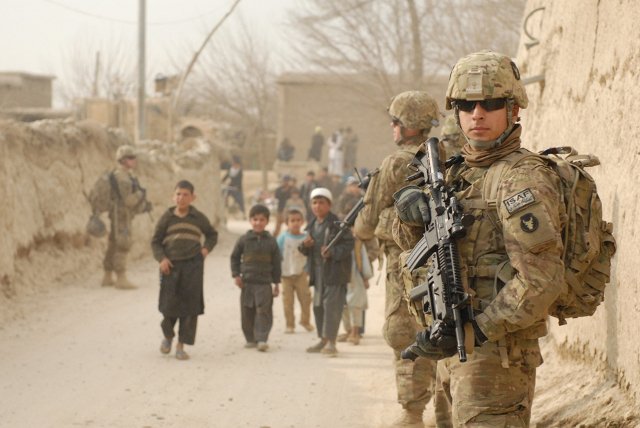Intelligence and Counterintelligence
The ongoing and continuous innovation and development in information technology will continue to greatly affect the defence and intelligence apparatus within states. The main intelligence threats from states will continue to be Russia and China due to their capabilities and intent.
Human intelligence is defined by the CIA as “any information that can be gathered from human sources,” including “clandestine acquisition” of documents and information gathering from contacts within foreign governments. This will be both an issue for Canada as it tries to protect against foreign human intelligence, and as it tries to pursue human intelligence sources in other capacities. Insiders and whistleblowers who illegally reveal state information, like Jeffrey Delisle in Canada, will continue to pose a threat to human intelligence.
Signals intelligence is “the collection and exploitation of signals transmitted from communication systems, radars, and weapon systems.” Intelligence gathering in this capacity relies heavily on state infrastructure and melds public and private sectors in intelligence gathering. Members of the Five Eyes Alliance, including Canada, US, UK, Australia, and New Zealand, rely heavily on cyber infrastructure for the day-to-day activities and functions of the state. Everything from communication to military command is dependent upon this infrastructure. This dependence creates vulnerabilities that can easily be exploited.
States use counterintelligence as a strategy to exploit the vulnerabilities of other states. Counterintelligence allows states to offensively weaken hostile foreign intelligence services by identifying, assessing, and neutralizing the activities of these states. In this way, counterintelligence is both a valuable strategy and a significant threat to state security.
Nuclear Proliferation
Nuclear weapons continue to pose a significant threat to international and regional security. Vertical proliferation by states is increasingly contentious, especially in the case of rogue states such as North Korea. Nefarious non-state groups acquiring nuclear materials are also a growing possibility. For instance, improvised chemical weapons have been used in Syria by both state and non-state groups, which demonstrates that advanced facilities and technical capabilities are not necessary to develop rudimentary Weapons of Mass Destruction (WMD).
The security of nuclear facilities and munitions stores is also a security concern. The suspension of nuclear counter proliferation efforts, such as the Cooperative Threat Reduction program in 2015, has the potential to create gaps in efforts to maintain the security of such materials. While the sale of high-enriched uranium is regulated, there could be a possibility of illicit trafficking.
Terrorism and Homegrown Terrorism
Terrorist activity by non-state groups continues to pose a grave threat to international and regional security. With new techniques and technologies, and highly sophisticated media and communication infrastructures, non-state terrorist groups, like IS, can more easily pursue their objectives and causes.
Homegrown terrorism is, in part, a product of terrorist groups’ new techniques and technologies to radicalize individuals around the world. For example, in the case of IS radicalization, IS tactics rely heavily on the ease with which recruits are able to travel to Syria. State security agencies and police can only do so much to monitor and prosecute these individuals. IS has “radicalized, recruited, and trained” thousands of young Europeans; in France alone it is estimated that there are between 400 to 500 individuals radicalized by IS. When these individuals return home, they remain connected to the support networks. As IS continues to build a strong international network, their ability to recruit, and to direct and inspire attacks around the world will also continue to grow.
The spread of non-state terrorist groups will continue to affect regional security across the MENA region. For example, in Libya, IS will continue to expands on its “varying degrees of presence across the country.” While in Nigeria, IS will continue to influence other terrorist groups like Boko Haram.
Resource Scarcity and Human Security
While there are obvious threats to human security such as armed insurgent groups, terrorism and authoritarian governments, there are also threats aggravated by poor environmental conditions. These poor environmental conditions can lead to rising demands for food and water that cannot be met. Environmental degradation and a lack of natural resources can lead to political strife and displacement of peoples, while poor infrastructure and inadequate policies add to these struggles. All these conditions have the tendency to spark political instability, health crises, and humanitarian crises.
With resource scarcity, citizens often turn against their government, shift blame to various national institutions, or even to their own people. The resulting civil wars risk large-scale violence and cycles of power abuse and conflict. These regional conflicts are then likely to spill over and spread causing humanitarian crises, as is the case with Syrians in Turkey, Jordan, Lebanon and Europe. As the world continues to struggle to find accommodation and to create safe havens for these refugees, it is important to understand the environmental connections to these crises.
Canada’s Defence Perspectives 2020-2050: Recapitalization and the Canadian Forces is an event hosted in partnership with the Mackenzie Institute, and with support from the Department of National Defence. The conference will look to engage security and defence academics, military representatives and professional in various panels discussing Canadian defence perspectives. These articles have been composed to highlight some of the important talking points that will be uncovered throughout the conference, and give further insight into the important work being done to continue discussion relating to Canadian security and defence.
This article relates to the panel that will take place on day 1 of the conference and features:
- Captain (N) Christophe Balducchi, Defence Attaché, French Embassy in Ottawa
- Stephen Burt, Assistant Chief of Defence Intelligence, Canadian Forces Intelligence Command
- Thomas Juneau, Assistant Professor, University of Ottawa (Moderator)
If this topic interests you, please attend our conference from March 29-30th, 2016 at the Fairmont Château Laurier in Ottawa. For further information and registration please click here




